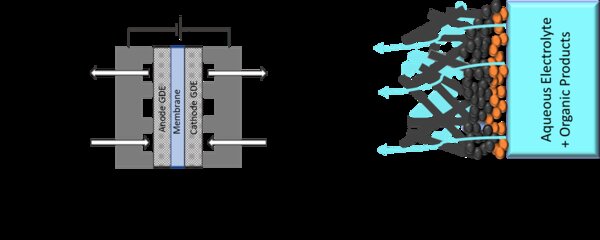
To combat environmental issues and mitigate climate change, carbon dioxide (CO2) electrolysis has emerged as an attractive negative-carbon technology to produce valuable chemicals. In recent years, gas diffusion electrodes comprising a gas diffusion medium (GDM) and a catalyst layer, have been introduced to achieve higher current densities by improving mass transport rates, eliminating the challenge of large diffusion lengths and low solubility in water persistent in liquid electrolytes for CO2. However, insufficient electrolyte/product repellency by the electrode surface results in catastrophic flooding of the electrode, dramatically reducing the operational time of the reactor. Within the scope, unlike the excessive efforts to understand the effect of catalyst wettability, the impact of GDM surface properties remains largely unexplored.
In this project, we employ coating chemistry to investigate the relation between the electrode wettability and reactor stability for CO2 electrolysis. The goal is to tailor the GDM surface energy and microstructure to achieve operational times exceeding 1000 hours and enhanced reactor performance by suppressing the electrode flooding.

Contact details:
Mert Erer
SMP - EMS
Helix, STO 1.49
m.c.erer@tue.nl